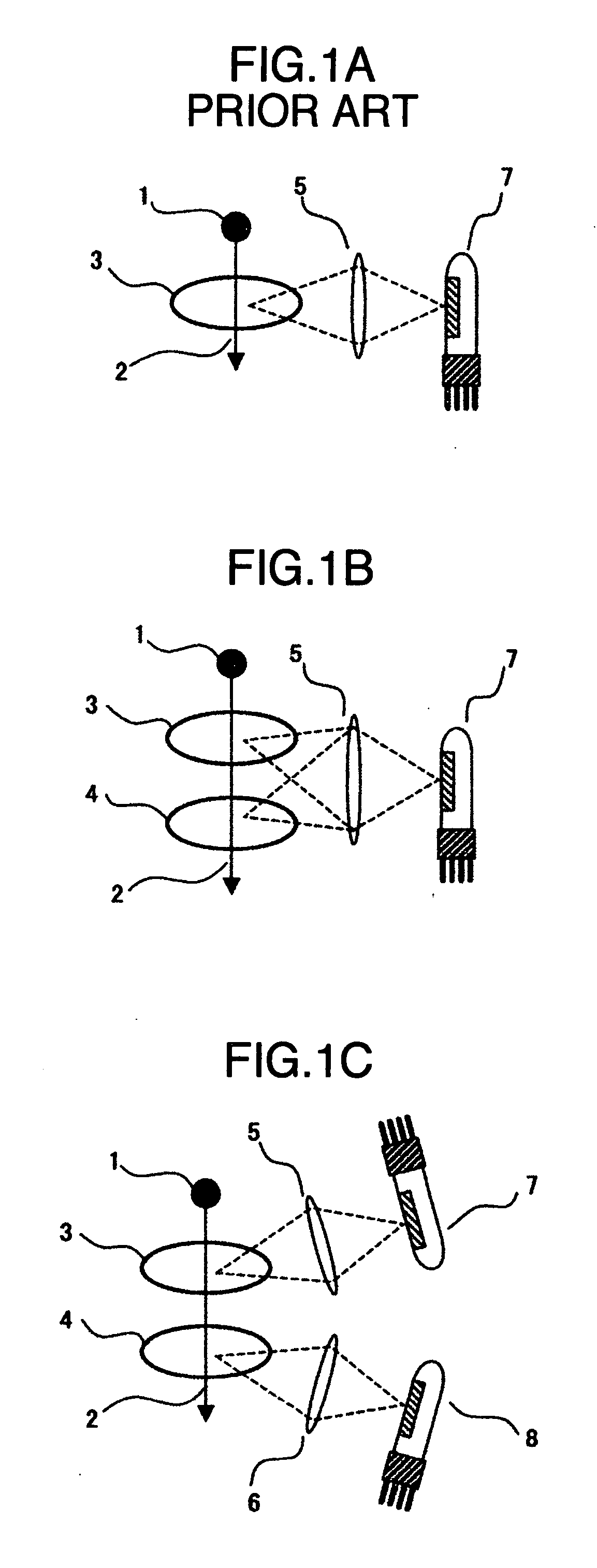Optical inspection method and optical inspection apparatus
a technology of optical inspection and optical inspection apparatus, which is applied in the direction of instruments, originals for photomechanical treatment, semiconductor/solid-state device testing/measurement, etc., can solve the problems of increasing the risk of thermal damage to the sample, the wavelength of the available light source having an output suitable for detecting a contaminant particle or defect is limited, and cannot be shortened to less than a certain limit, so as to improve the detection sensitivity of contaminant particles or defects, the time required for inspection
- Summary
- Abstract
- Description
- Claims
- Application Information
AI Technical Summary
Benefits of technology
Problems solved by technology
Method used
Image
Examples
Embodiment Construction
[0025] This invention is explained in detail below.
[0026] The configuration in which the scattered light generated from a single illumination spot is detected by a single photodetector as in the prior art is shown in FIG. 1A. A sample is mounted on a sample stage. The sample stage moves in a combination of a translation movement for primary scanning and another translation movement in the direction orthogonal to the first translation for secondary scanning or a combination of the rotational movement for primary scanning and the translation movement for secondary scanning. A contaminant particle 1 on the surface of the sample is moved along a locus 2 by the primary scanning of the sample stage. The contaminant particle 1, upon passage through an illumination spot 3 on the locus 2, generates the scattered light by the radiated light. This scattered light is condensed by a scattered light condenser lens 5, and detected and converted into a scattered light signal by a photodetector 7. ...
PUM
| Property | Measurement | Unit |
|---|---|---|
| optical path length | aaaaa | aaaaa |
| optical inspection | aaaaa | aaaaa |
| elevation | aaaaa | aaaaa |
Abstract
Description
Claims
Application Information
 Login to View More
Login to View More - R&D
- Intellectual Property
- Life Sciences
- Materials
- Tech Scout
- Unparalleled Data Quality
- Higher Quality Content
- 60% Fewer Hallucinations
Browse by: Latest US Patents, China's latest patents, Technical Efficacy Thesaurus, Application Domain, Technology Topic, Popular Technical Reports.
© 2025 PatSnap. All rights reserved.Legal|Privacy policy|Modern Slavery Act Transparency Statement|Sitemap|About US| Contact US: help@patsnap.com



